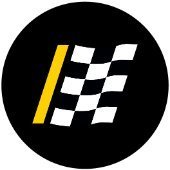-
Welcome to Auto Parts Forum
Whether you are a veteran automotive parts guru or just someone looking for some quick auto parts advice, register today and start a new topic in our forum. Registration is free and you can even sign up with social network platforms such as Facebook, X, and LinkedIn.
Replacement Parts For European Vehicles
-
Similar Topics
-
By Counterman
With a theme of “We the People,” the
link hidden, please login to view (The Group) held a successful national membership conference. The event took place at the Gaylord National Harbor in National Harbor, Maryland. Over 1,000 members, suppliers and associates attended the 2025
link hidden, please login to view. The event kicked off with an opening celebration linking the nation’s history to current aftermarket challenges and opportunities, including Right to Repair. A drum and fife corps opened the evening, followed by a unique look at history from Thomas Jefferson and Teddy Roosevelt. The Newsies then performed a musical stage production. The evening ended with a dinner and vendor expo.
Industry leaders outline shared goals
Day two of the Automotive Parts Services Group 2025 conference began with remarks from top industry leaders.
Sue Godschalk, CEO of Federated Auto Parts, Robert Roos, CEO of The Pronto Network, and JC Washbish, President and CEO of the Aftermarket Auto Parts Alliance, welcomed attendees. They discussed the size of The Group and its supported initiatives.
Jeff Koviak, CEO of The Group, followed with an inspiring message. He emphasized building a collaborative culture using combined strength, collective action and shared innovation.
One-on-one meetings strengthen supplier partnerships
The four-day event included over 4,800 one-on-one sessions between Group members and supplier partners.
Attendees also joined brand-specific meetings and a vendor expo. The conference concluded with a D.C. Block Party Afterglow Reception and Celebration.
“We thank all who attended the 2025 Automotive Parts Services Group conference who helped us conduct a very positive, productive and collaborative meeting,” said Koviak. “The event gave us the opportunity to review objectives, set goals and strengthen partnerships, putting into perspective the importance of ‘We the People’ to our mutual success.”
The post
link hidden, please login to view appeared first on link hidden, please login to view.
link hidden, please login to view -
By Advance Auto Parts
RALEIGH, N.C.--(BUSINESS WIRE)-- Advance Auto Parts, Inc. (NYSE: AAP), a leading automotive aftermarket parts provider in North America that serves both professional installers and do-it-yourself customers, will report financial results for its first quarter ended April 19, 2025, before the market opens on Thursday, May 22, 2025. The company has scheduled a conference call and webcast to begin at 8:00 a.m. ET on Thursday, May 22, 2025.
A live webcast will be available on the company’s Investor Relations website (
link hidden, please login to view). To join by phone, please link hidden, please login to view online for dial-in and passcode information. Upon registering, participants will receive confirmation with call details and a registrant ID. A replay of the conference call and webcast will be available on the company’s Investor Relations website for one year. About Advance Auto Parts
Advance Auto Parts, Inc. is a leading automotive aftermarket parts provider that serves both professional installers and do-it-yourself customers. As of December 28, 2024, Advance operated 4,788 stores primarily within the United States, with additional locations in Canada, Puerto Rico and the U.S. Virgin Islands. The company also served 934 independently owned Carquest branded stores across these locations in addition to Mexico and various Caribbean islands. Additional information about Advance, including employment opportunities, customer services, and online shopping for parts, accessories and other offerings can be found at
link hidden, please login to view.
Investor Relations Contact:
Lavesh Hemnani
T: (919) 227-5466
E: [email protected]
Media Contact:
Nicole Ducouer
T: (984) 389-7207
E: [email protected]
Source: Advance Auto Parts, Inc.
link hidden, please login to view -
-
By Dorman Products
Programming instructions | Dorman replacement keyless remotes and programmers for CDJR vehicles
-




Recommended Posts
Join the conversation
You can post now and register later. If you have an account, sign in now to post with your account.
Note: Your post will require moderator approval before it will be visible.